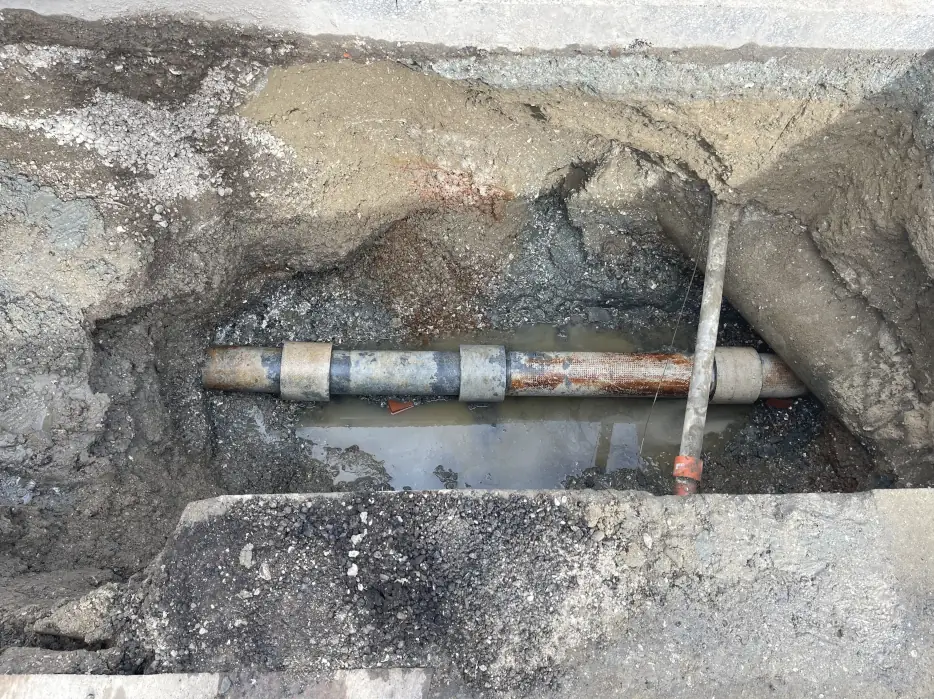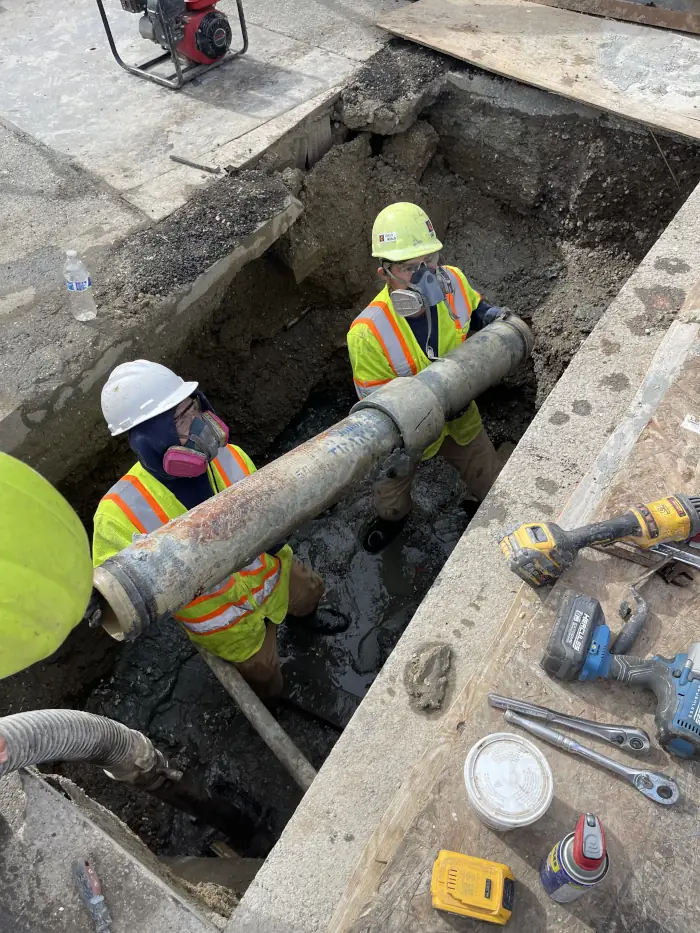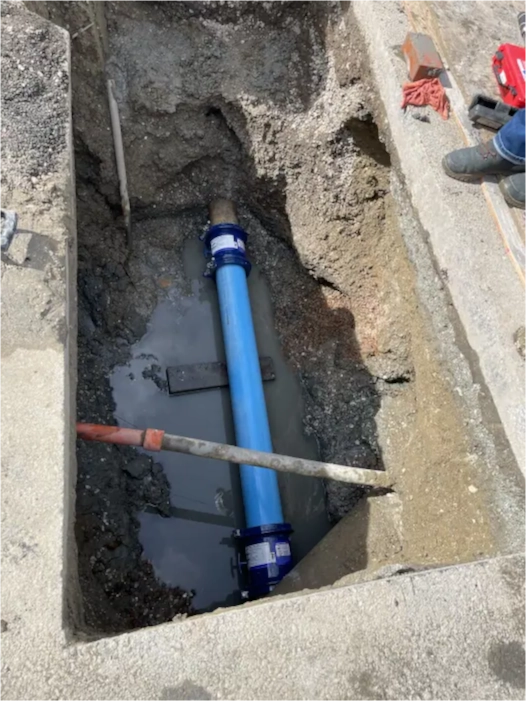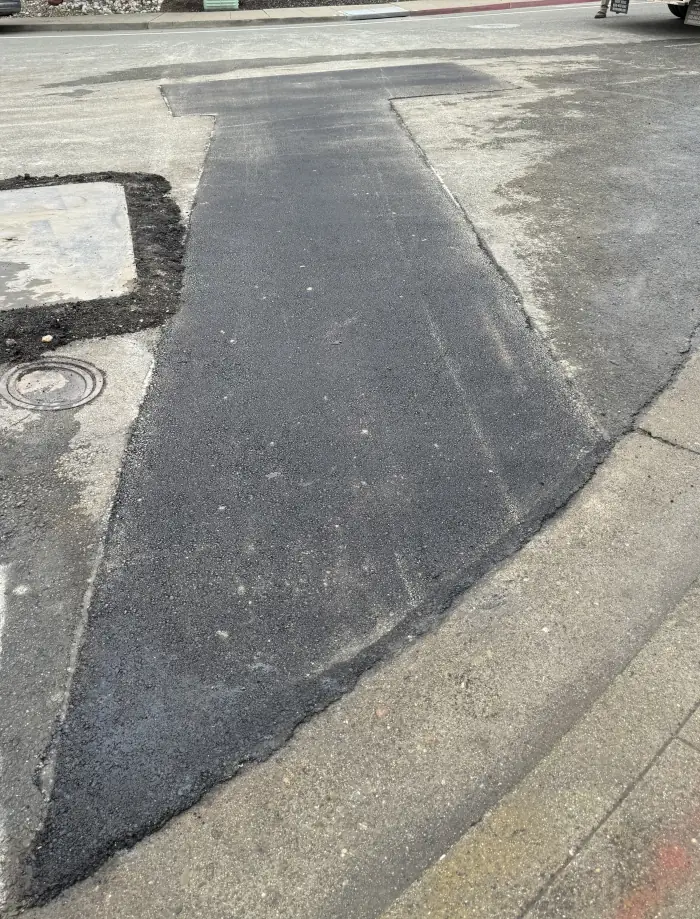
We do a lot of water line leak detection, repairs, and new water line installations. Most of the time for water line upgrades/new installations, we use a process referred to as a “hot tap.” Hot taps essentially are taps into a pressurized water pipe without the need for a water shutoff that can potentially impact an entire neighborhood. Hot taps are a safe and economical way to add new water service lines.
During a project where we were hired to upgrade the water service line from 3/4“ to 1”, we ran into a complication. Once we excavated and exposed the water line main, the area we wanted to tap into had a series of couplings near each other—a building practice that would not be allowed today. They were close enough together that we could not get the required separation from the couplings to our hot tap point. At that point, the City, Foster City to be specific, decided we should not tap that section and it would be best to replace the entire section of pipe, removing the old couplings. Such a decision was not made lightly as it involves numerous City resources, a significant loss of fresh water, traffic impact, and temporary water service interruption for an entire neighborhood.
Foster City was an excellent partner for this project. They coordinated with us to alert impacted residences and businesses and arranged for the City resources to shut down the water supply to the area where we needed to cut the pipe. This shutdown impacted 38 homes and one business.
The solution was to replace the entire section of pipe with a new piece of 6” C900 pipe (about 66” long) and two Hymax 2 couplings. With the new pipe installed, we had a successful hot tap the following day. Below are pictures and short videos from the process.
On the day of construction, Foster City Public Works shut off the water supply to the neighborhood and started to drain the area of water using a nearby fire hydrant.
With most of the water drained from the system, we cut into the water line. We brought a vacuum excavator which is a tailer-sized machine to take out the water.
With the water mostly drained from the system, we sanitized the new pipe section and installed it.


The next day, we had a tapping company come and perform the hot tap. To prepare, we clamped on the saddle and ball corp which is required to control the water once the walls of the pipe are breached.

With the new water connection installed and inspection passed, we backfilled with slurry/cement. We filled the trench up, leaving about 6″ for the asphalt layer which was installed the following day. All that was left was to plumb and connect the new water meter.

